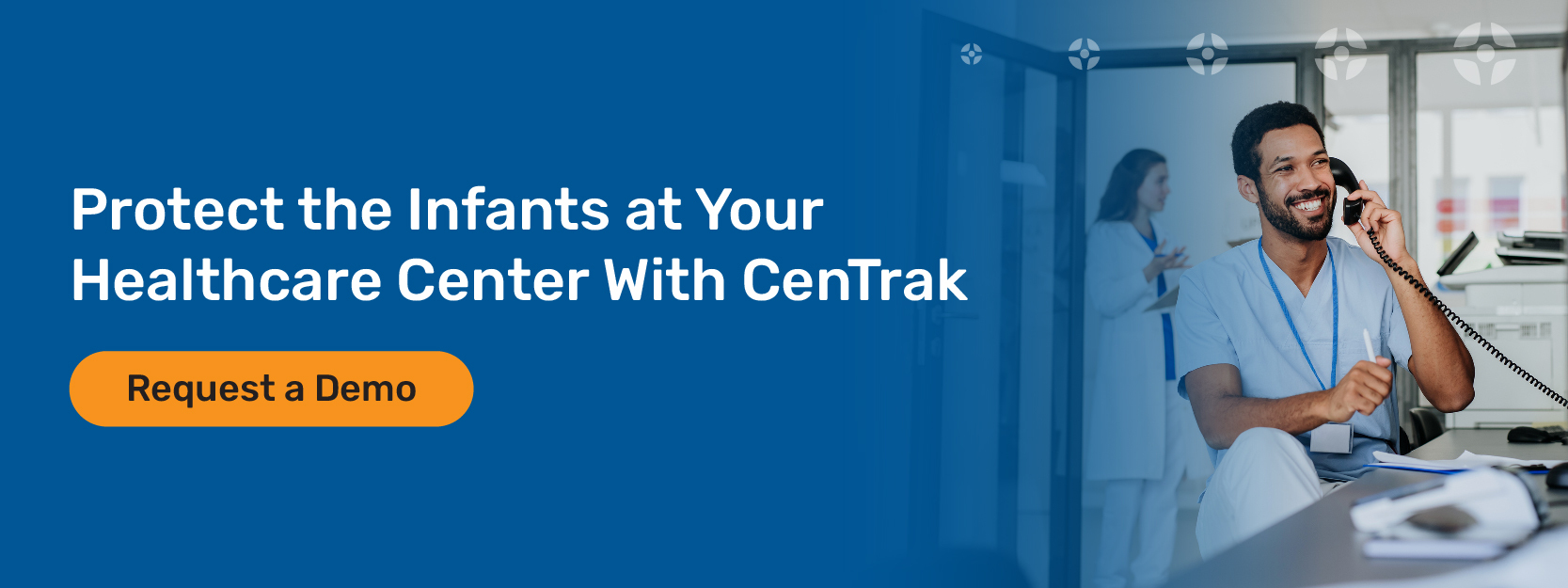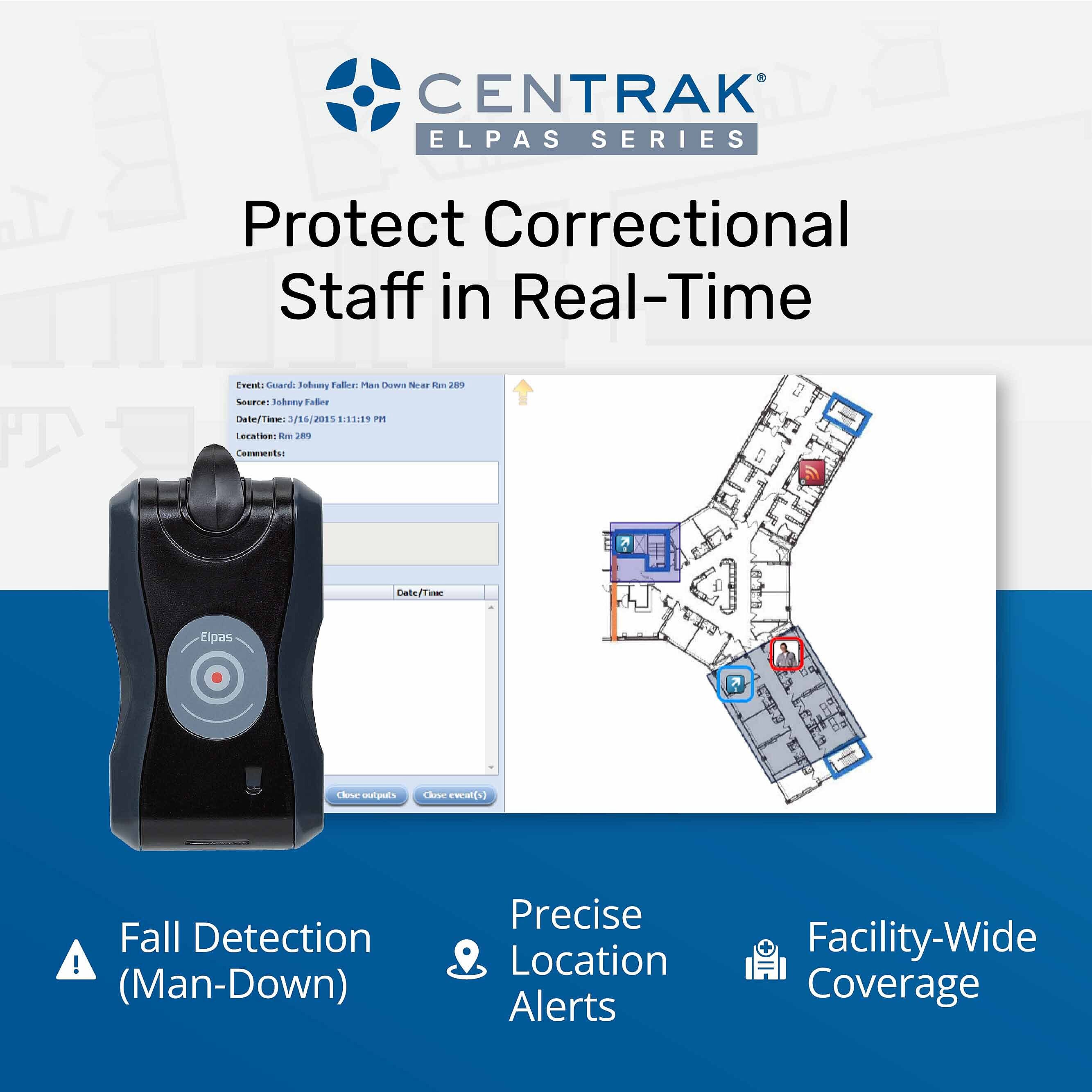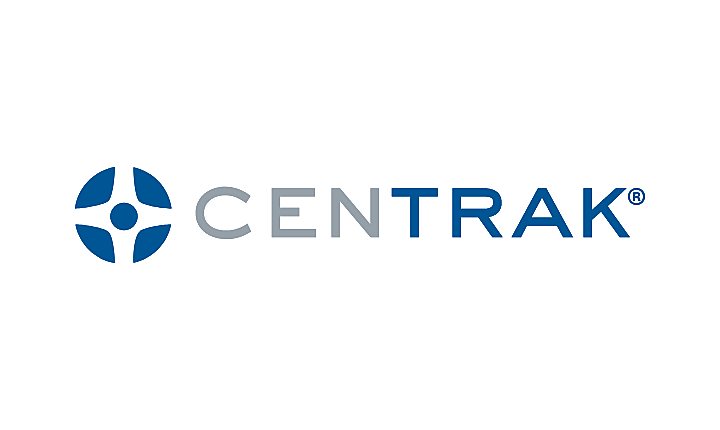Upgrading or Replacing Your Infant Protection System
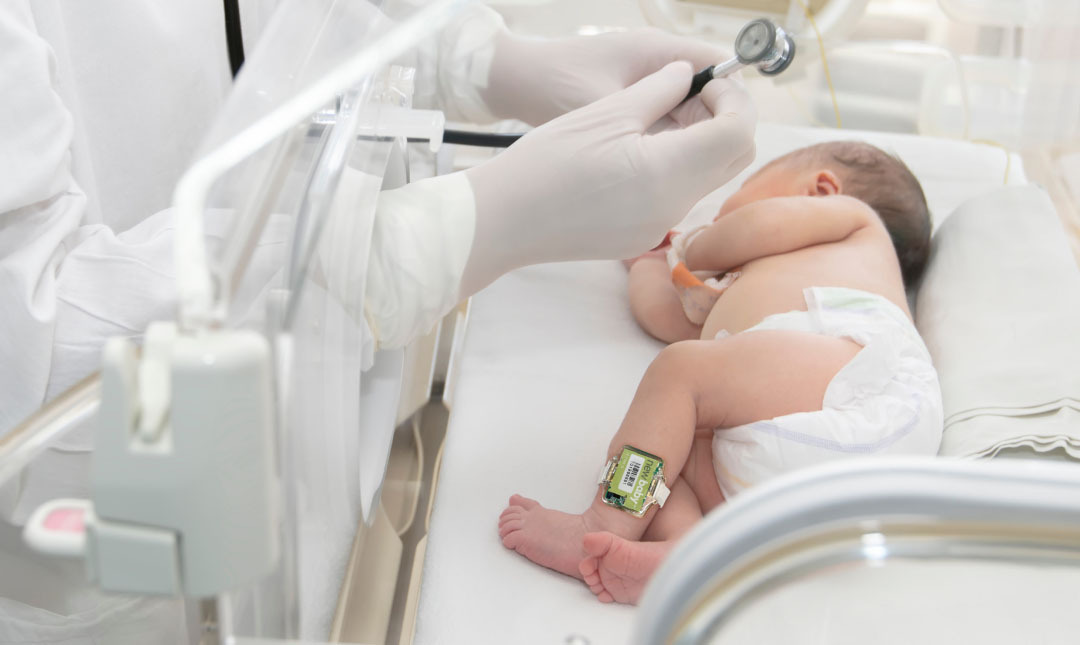
Author: Ash Cunningham, Product Manager, Safety Solutions
Healthcare facilities must do everything in their power to ensure no child is ever lost or abducted from their facility. Creating an infant protection program includes training staff, setting up security checkpoints and investing in appropriate technology.
At CenTrak, we’re experts in helping your healthcare facility run smoothly and more safely. Keep reading to learn more about our healthcare infant tracking system and how you can use it to make your hospital more secure for staff and families.
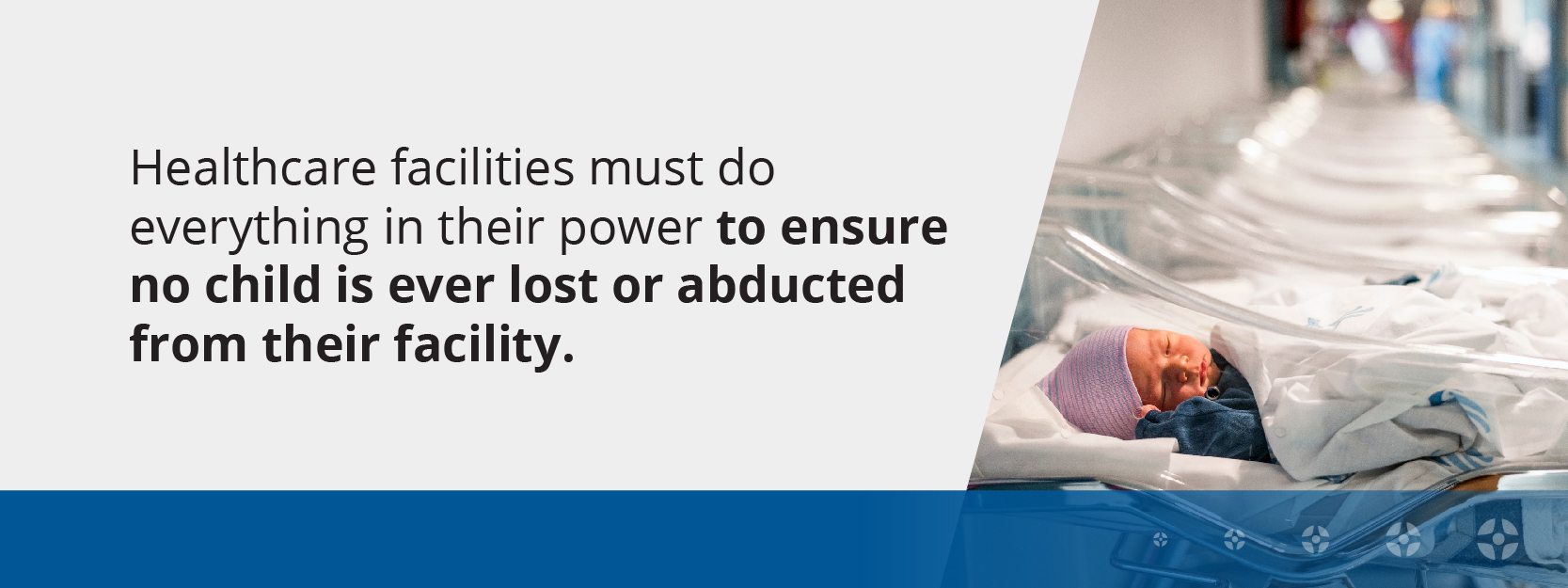
What to Look for When Upgrading an Infant Security System
When your healthcare facility is shopping for the best infant protection system, there are several capabilities you should look for. The goals of an infant protection system are to identify an infant’s location, prevent unauthorized egress/abduction, and ensure that they’re safely returned to their parents.
Comfort for Patients
The wearable tech devices for babies and their mothers need to be comfortable and unobtrusive. Infants have extremely tender skin and are encountering the world for the first time. In addition, mothers are recovering from childbirth and need to be comfortable as they heal.
Wearable RTLS technology should strike a balance, ensuring both security and comfort. It ought to be snug enough to stay in place securely yet crafted with a focus on comfort. Smooth edges are imperative, guarding against any potential skin irritation, while a sleek, compact design minimizes potential interference with daily activities within a newborn's first few days of life. Ideally, patients should hardly be aware they're wearing the infant protection system, facilitating a discreet and comfortable experience.
Ease of Use for Staff
When technology proves challenging to operate, its full potential often remains untapped. To mitigate obstacles and ensure better protection of your patients, both the physical products and infant protection software should boast intuitive usability.
Ideally, your infant protection system should be easy for staff to put on and safely remove. Software features like auto-enrollment upon application of the infant protection band, and customized patient transport/transfer options ensure an efficient hospital workflow.
Connectivity and Real-Time Alerting/Reporting
Every organization experiences Wi-Fi issues eventually — and it’s essential that your infant protection system doesn’t go down with the connection. Look for a system that works all the time, even if your Wi-Fi network is slowed or goes offline entirely.
To keep tabs on infants, infant protection systems should also send immediate alert notifications. These alerts serve to promptly notify staff members if infants venture into restricted areas or enter the wrong room. Additionally, you'll want to know immediately if a tag is being tampered with or a band has been cut. The faster and more reliable this system is, the better protected all newborns will be in your hospital.
After an alert is cleared and an event is managed, you’ll also want access to historical reporting. Alarm types generated over time, severity, date and time of occurrences, patient movements, transfer and transport events, and more. Data analytics provided by an infant protection system allows administration to view trends and better prepare for the future.
System Integration
Does your infant protection system integrate with other systems in your healthcare facility? Integration makes it simpler to keep track of data in a way that your staff already understands.
A reliable infant protection system should pair with itself and seamlessly send updates to its software. It shouldn’t overload other communication channels or create friction with existing healthcare systems. Look for standard integrations with systems like Active Directory, EMR, nurse call, patient infotainment platforms, delayed egress maglocks and hospital wide access control solutions.
Ongoing Support and Clinical Consulting
Another important aspect of a good system is ongoing technology support. Does the infant protection system you’re considering offer this kind of service? How reliable and fast is their support system, according to other users? Will you be ready to leverage the power of location technologies and is your staff fully prepared and equipped with workflow best practices?
When you invest in a new system, it should ideally work for a long time with continual updates and enhancements. Choose a company that’s continuing to develop so you can anticipate system improvements and continuity for your healthcare facility in the future. Furthermore, having the support of clinical and operational experts to provide guided change management, identify process gaps, and co-develop alert response protocols ensures the successful adoption of new technologies.
Platform Scalability
Real-time location systems come in many forms with a wide range of potential applications now and in the future. Is your system scalable to support the growing needs of your organization to address the dynamic priorities and challenges inherent in healthcare? Adding multiple technology systems, devices, software platforms may cause unnecessary system complexity in installation, maintenance activities and costs.
RTLS platforms on the market vary from single point solutions to comprehensive enterprise coverage options that support infant protection as well as additional applications such as asset management, nurse call automation, workflow automation, electronic hang hygiene compliance monitoring, wayfinding, environmental monitoring, and more. Consolidation and standardization of applications onto a single platform helps to minimize IT burden, reduce costs, and increase efficiencies in system usability, maintenance, and management.
Changes in Clinical Infant Protection Technology — Stanley Hugs Ending
Some healthcare facilities have utilize the Hugs Infant Protection to keep newborns and moms safe and connected in a hospital setting. The Hugs system initially used radio frequencies to identify a child’s location and ensure they went back to the right parent.
In 2013, Stanley Healthcare offered a new version of Hugs that worked with Wi-Fi instead of radio frequencies. However, in 2019, Stanley Healthcare (now Securitas) announced that their Hugs LonWorks System would be End-of-Life (EOL) on August 1, 2024. Healthcare centers can now choose to replace Hugs infant location system with another infant protection system.
How CenTrak newbaby™ Compares to Stanley Hugs
At CenTrak, we’ve developed the newbaby™ infant protection system to give your organization the best possible system for protecting infants. Here’s a quick comparison of CenTrak newbaby™ versus the Stanley Hugs system:
Stanley Hugs:
- Relies on Wi-Fi for communication
- Requires large batteries with a shorter lifespan
- Offers a limited number of different wearables
- Depends on network grade for location certainty
CenTrak newbaby™:

- Uses a dedicated Active UHF network for communication to avoid Wi-Fi issues
- Gen2IR technology requires less power than Wi-Fi, so batteries last longer and are smaller
- Offers a larger assortment of wearable options to provide optimal comfort for your patient population
- Allows “stacking” RTLS applications with the option for room-level location certainty to support Hand Hygiene Compliance monitoring, Nurse Call Automation, Staff Duress, and more.
Because newbaby™ operates on a dedicated 900MHz communication protocol, it helps your healthcare facility function more smoothly and reliably. Alerts will come in faster, personal wearables can be smaller, batteries last longer, and location accuracy is scalable to fit your unique needs. The infant protection software also boasts an intuitive user interface to support ease of use for staff and provides visual confidence and peace of mind that infants are secure and protected.
In addition, our system integrates seamlessly with other CenTrak applications you may already be using in your healthcare facility. When you add newbaby™ to your system, you’re adding a new communication channel that parallels other processes without overloading them.
CenTrak newbaby™ and newmom™ Technology
At CenTrak, we’ve designed our newbaby™ and newmom™ wearables to be both comfortable and secure. The newbaby™ wearable is small and lightweight, with a concaved back for a more comfortable fit on the infant.
Our newmom™ wearable is water-resistant and easy to clean, just like the newbaby™ wearable. It provides LED alerts to support mother-baby matching, and you can pair with up to four infants. This technology also allows staff to locate the mom’s location within the unit or anywhere in the facility where RTLS network coverage is provided.
Facilities can use CenTrak’s infant security solution solely for newborn and parent safety, or you can build other use cases onto the RF infrastructure. If your hospital already has CenTrak infrastructure, choosing newbaby™ is an easy way to add or enhance existing infant security protocols.
Protect the Infants at Your Healthcare Center With CenTrak
Investing in the right equipment and software is an important part of protecting infants and parents at your healthcare facility. With effective systems in place, you can spend more time caring for patients and less time worrying about their whereabouts.
If you’re looking for an infant protection system upgrade, consider CenTrak. It’s an excellent choice for replacing the Hugs LonWorks system before its end of support date in August 2024. Request a demo today to learn how easy this transition can be!
